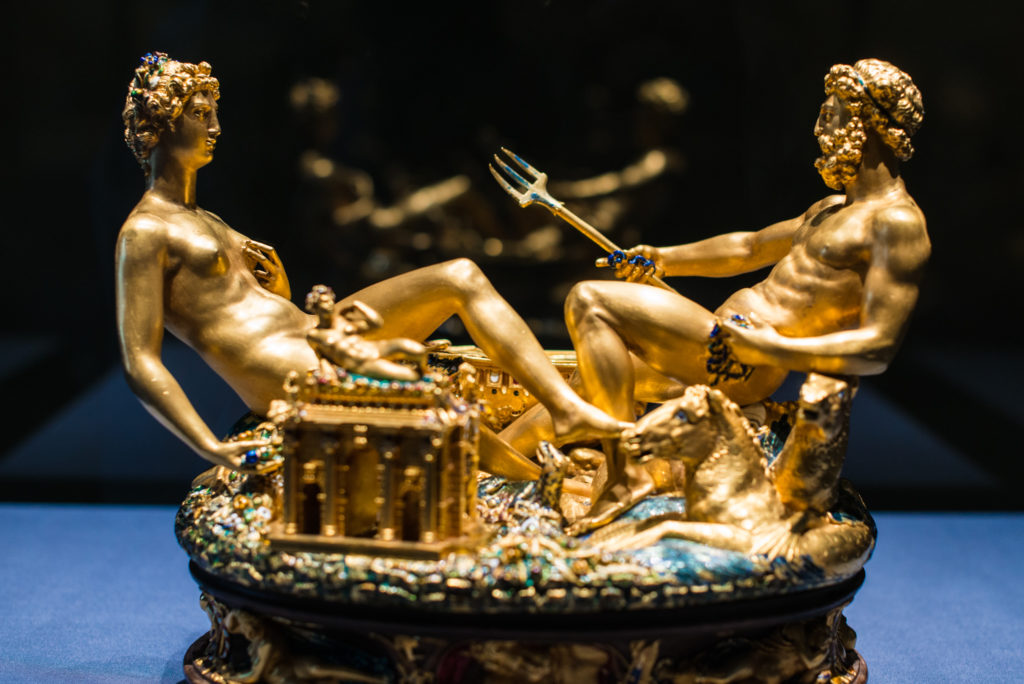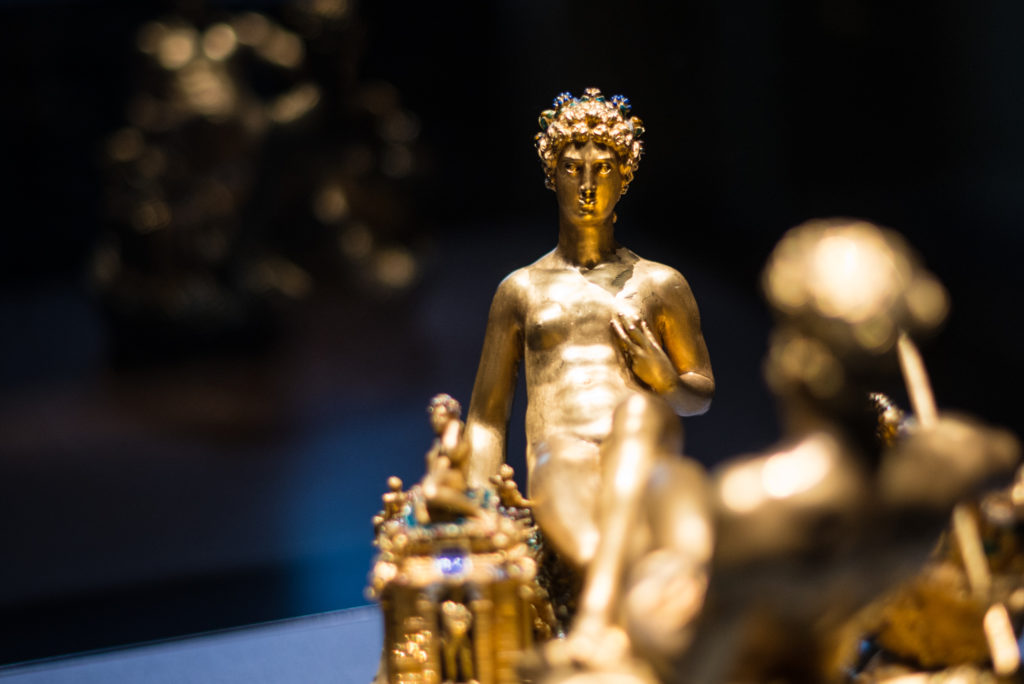
In 1544, the Florentine artist Benvenuto Cellini sculptured an intricate little salt table, saliera in Italian, which, for different reasons, went on to become one of Vienna’s most famous works of art. The Saliera is insured for the breathtaking sum of 60 million Euros. And good that it is…
Created for Charles I of France, the Saliera is a virtuoso piece in the then fashionable style of Mannerism. While in Renaissance art natural beauty, symmetry and balance were enhanced, Mannerism exaggerated these qualities to an extent that artworks appeared asymmetric, artificial. Mannerism addressed intellect rather than emotion – complex and sophisticated, with style and technique outweighing beauty and – meaning. A characteristic that some might find quite suitable to Viennese etiquette and manners…

Made of ivory, gold and enamel, the Saliera depicts a man and a woman: an allegory to the Sea and the Earth. A small vessel next to the man holds salt, a temple-shaped box next to the female figure pepper. On its base it even has a set of roles, for convenience at dinner parties and banquets – or for pure appreciation.
Charles son, Charles II, gave the Saliera to the Habsburgers as a present to Ferdinand II of Tyrol, when the former married Elisabeth of Austria. The Habsburg emporers and archdukes were avid collectors of exotic and uncommon materials, like precious stones, ostrich eggs, shark teeth and their likes – many of which were believed to hold magic powers – and were turned into works of art by chosen artists.

The Kunstkammern – arts and natural wonders rooms – were collections that attempted to represent the erudition of their time. When the Museum of Fine Arts in Vienna was completed in the 19th century, the Saliera was transferred to Vienna, and has been at public display, well protected, since the Museum was opened in 1891. The Kunstkammer at KHM, Vienna, is still considered the most important of its kind in the world.
The Saliera sat idly among other spectacular, delicate or bizarre statuettes, clocks or automatons – until 15th years ago, on May 11th 2003, when during a renovation the museum covered by a scaffolding, the salt dish was stolen. No alarms went off, the Saliera was simply gone.

The museum offered a reward of one million Euros for its recovery. Without success. It was in January 2006 only that the Saliera was discovered, buried in a forest 90km North of Vienna. The thief – one by occasion rather than training – had turned himself in. He had been caught by surveillance cameras and recognized by his friends.
Ever since then, the Saliera is the most popular piece of art in Vienna.

